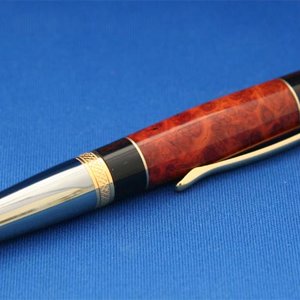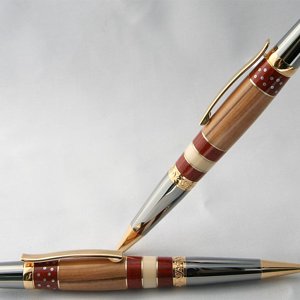leehljp
Member Liaison
I am often in disagreement in basic sanding techniques from different ones. So, here are some thoughts and examples:
SANDING FOR ADHERENCE PURPOSES:
1st misunderstanding, and I heard this from old timers of whom I valued their opinions: Wood needs to have a rough surface from sandpaper for finish to adhere.
But I have also learned . . . :
1. I have learned that CA can make rear view mirrors stick on smooth glass for 50 years.
2. I have learned that house paint can stay on paned glass until the wife makes the husband remove it 10 years later.
3. My aunt drove under the Golden Gate Bridge when they were painting it in the late 50's. A few drops of the paint dropped on the car and they kept the car for 10 years. The reddish paint stayed put.
4. The idea is that wood absorbs humidity, and the changes from up under - is what causes paint to separate, and the roughness is what allows some paint to adhere longer. This is why it is recommended that furniture be finished on both sides - to keep most furniture finish from separating. On pens, finish is different than on furniture and the smoothness of the wood is basically irrelevant to finish adhering. JohnT and a few others (me too) START sanding at nothing less 400 or more. The smoothness does not affect the finish adhering to the wood in these situations.
SANDING TO PREVENT SWIRLS:
Numerous times in the past year or so (and previously), the idea of stopping the lathe and sanding WITH THE GRAIN to prevent swirls is recommended. I have never had that problem, and tried to figure out why others have to do that to get a good swirl free finish.
Today, I was looking as some things on "Pinterest" and it dawned on me what some of the differences might be.
IF one must sand WITH the grain for it to NOT have swirls, could it be that the technique is missing something? Look at these two links below, then answer the question below:
So, which direction does one sand or rub to get that kind of smoothness on the surfaces of those two objectives when looked at from all directions?
The conclusion is that it does not matter the direction of sanding/rubbing if the proper techniques are used. Maybe we could learn something by watching some YouTubes on how these guys/ladies polish the castings.
SANDING FOR ADHERENCE PURPOSES:
1st misunderstanding, and I heard this from old timers of whom I valued their opinions: Wood needs to have a rough surface from sandpaper for finish to adhere.
But I have also learned . . . :
1. I have learned that CA can make rear view mirrors stick on smooth glass for 50 years.
2. I have learned that house paint can stay on paned glass until the wife makes the husband remove it 10 years later.
3. My aunt drove under the Golden Gate Bridge when they were painting it in the late 50's. A few drops of the paint dropped on the car and they kept the car for 10 years. The reddish paint stayed put.
4. The idea is that wood absorbs humidity, and the changes from up under - is what causes paint to separate, and the roughness is what allows some paint to adhere longer. This is why it is recommended that furniture be finished on both sides - to keep most furniture finish from separating. On pens, finish is different than on furniture and the smoothness of the wood is basically irrelevant to finish adhering. JohnT and a few others (me too) START sanding at nothing less 400 or more. The smoothness does not affect the finish adhering to the wood in these situations.
SANDING TO PREVENT SWIRLS:
Numerous times in the past year or so (and previously), the idea of stopping the lathe and sanding WITH THE GRAIN to prevent swirls is recommended. I have never had that problem, and tried to figure out why others have to do that to get a good swirl free finish.
Today, I was looking as some things on "Pinterest" and it dawned on me what some of the differences might be.
IF one must sand WITH the grain for it to NOT have swirls, could it be that the technique is missing something? Look at these two links below, then answer the question below:
So, which direction does one sand or rub to get that kind of smoothness on the surfaces of those two objectives when looked at from all directions?
The conclusion is that it does not matter the direction of sanding/rubbing if the proper techniques are used. Maybe we could learn something by watching some YouTubes on how these guys/ladies polish the castings.
Last edited:


